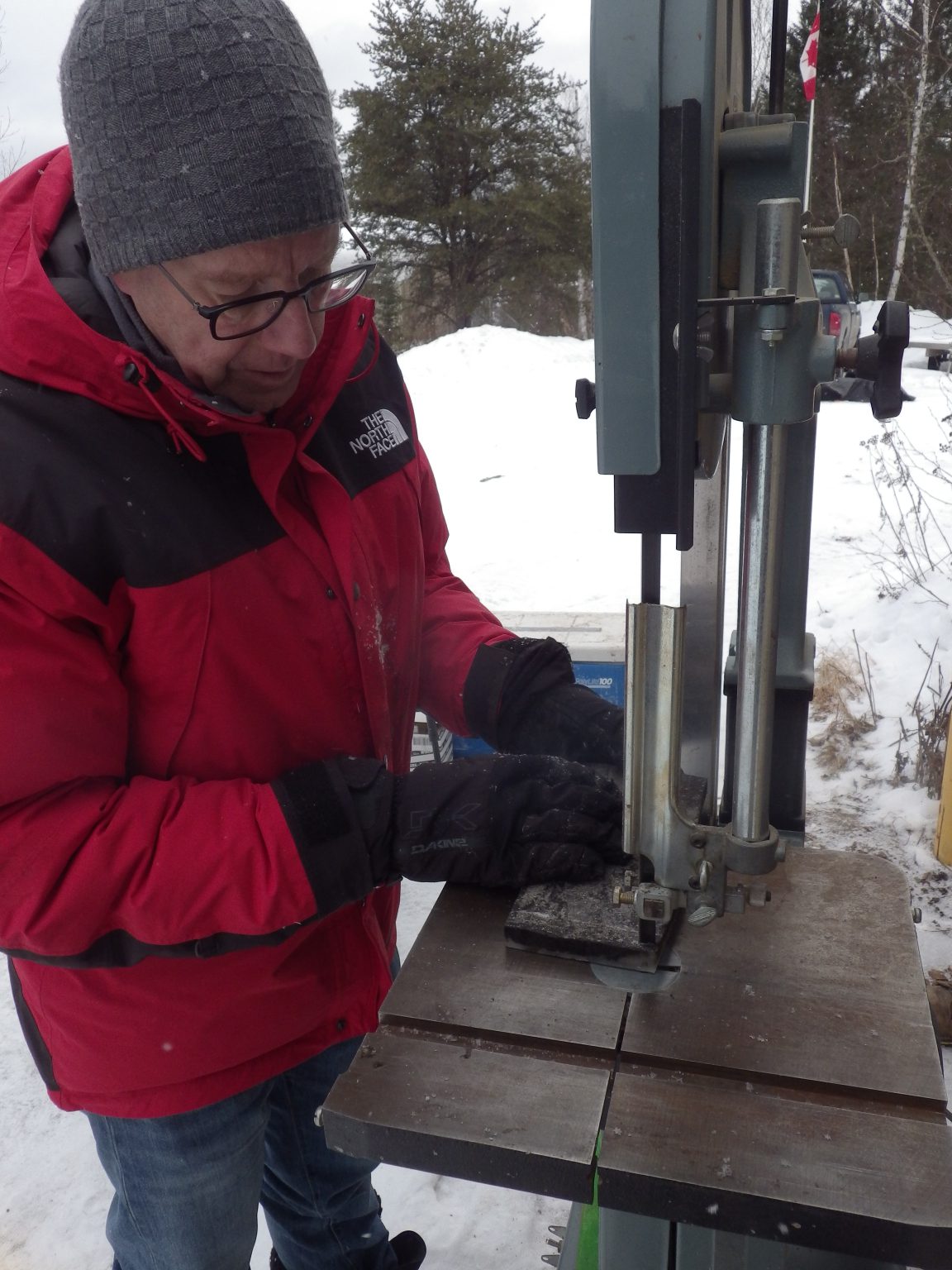Research March 28, 2017
How and Why We “Freeze-Core” at IISD-ELA
By Paul Fafard, Field Sampling Technician , Michael Paterson, Senior Scientist
In every lake, including those at IISD Experimental Lakes Area (IISD-ELA), a constant rain of particles settles through the water to become the mud on the bottom. Mud in the quietest and deepest waters is made up of newly deposited particles at the point where the mud and water meet, with older and older material underneath.
By looking at changes in the nature of these particles with depth in the mud, we can reconstruct long-term changes in a lake. These changes may be associated with climate change, human activities, forest fires and other events. For example, the remains of microscopic plants and animals are preserved in lake sediments and changes in their composition can provide evidence of changes in water quality. Settling particles also reflect the chemistry of a lake at the time they were deposited. In combination with radiometric dating methods, we can accurately reconstruct changes in a lake over periods from a few years back to the time a lake was created. In rare cases, settling particles create annual lines in the sediments—think of how rings in the trunk of a tree depict its history. These are called varves and when they exist, even seasonal changes can be reconstructed.
A varved core from Lake 227 at the IISD-ELA. The white ice at the top is frozen lake water. Each set of dark and light lines represents one year of sediment deposition. Beginning in 1968, nutrients were added to this lake, which caused large increases in algal biomass. Because the amount of material settling to the lake bottom also increased, the thickness of the varves is greater at the top of the core and near the sediment-water interface.
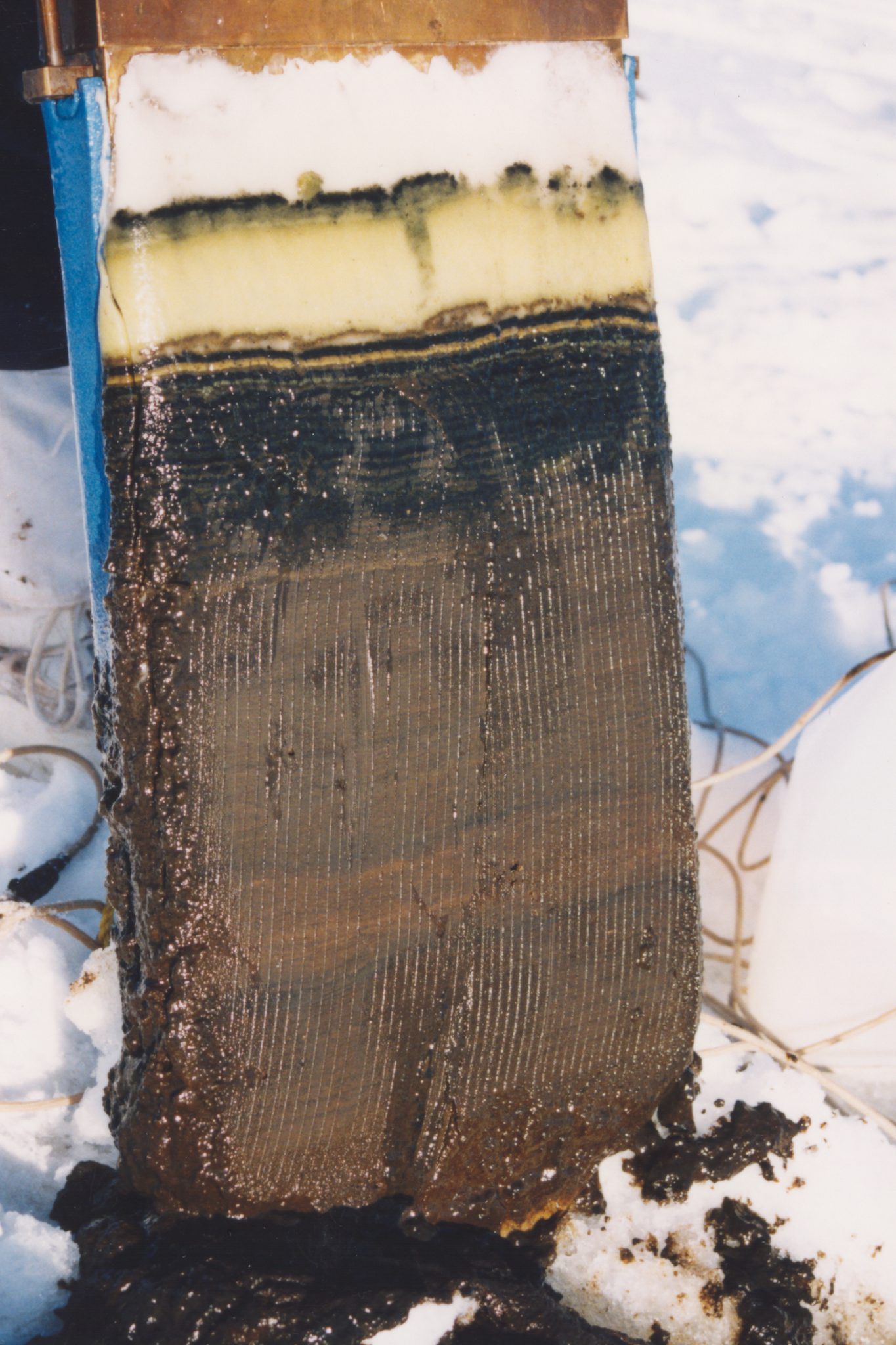
This January at IISD-ELA, we set out to collect sediment cores from Lake 222. Because sediment in our lakes is very flocculent (soft and fluffy), we used a specialized technique called “freeze coring” to make sure we didn’t disturb the sediment too much.
This method is most easily carried out through the ice in winter, when we have a stable platform from which to work. With this method, sediments are frozen to a box containing dry ice and methanol lowered into the mud. Once frozen, they are removed from the lake, packed up and analyzed in the laboratory.
The steps involved are as follows:
(Note that this a highly specialized process and should only be carried out by experts)
- The freeze corer is comprised of a 1.2 x 0.1 x 0.2 metre aluminum box with one end bevelled like a chisel and containing a lead weight. Three sides of the box are insulated with blue polyethylene foam so that mud freezes to one side only.
Adding the slurry of dry ice and methanol to the freeze corer.
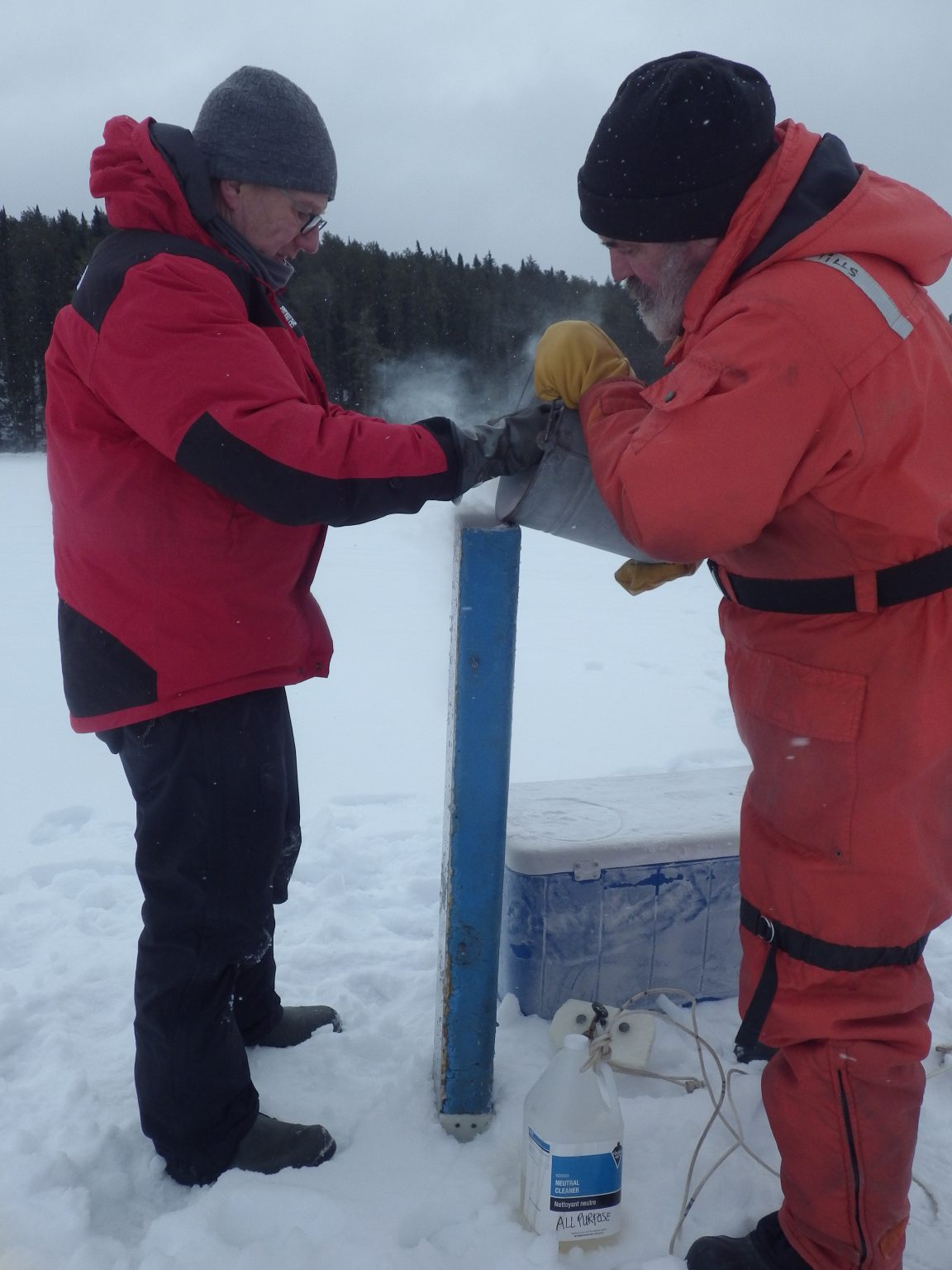
- A hole is drilled through the ice at the coring location and the depth of the water underneath determined using a hand-held depth sounder.
- The freeze corer is then filled with crushed dry ice and methanol. The temperature of the dry ice is -78°C—the extreme cold temperature needed to freeze the sediment to the corer. The methanol fills the gaps in the crushed dry ice, distributing the cold temperature evenly along the exposed side of the corer for a uniform freezing surface. The methanol will not freeze, even at -78°C; however, care has to be taken that no exposed skin touches the dry ice, methanol or the cold surfaces of the corer.
- The freeze corer is lowered quickly through the hole in the ice and down through the water column to within 1 metre of the lake bottom. It is then lowered very slowly and carefully to prevent too much disturbance of the mud and allowed to sink into the lake sediment.
- The freeze corer is tied off at the ice surface and left for 15-20 minutes to allow the sediment to freeze to the uninsulated side. The freeze corer is then brought to the surface. Using a putty scraper, excess unfrozen sediment is removed from the frozen core. Any remaining dry ice/methanol is removed from the freeze-corer into a small cooler.
The freeze corer is brought to the surface and excess mud is scraped from the surface.
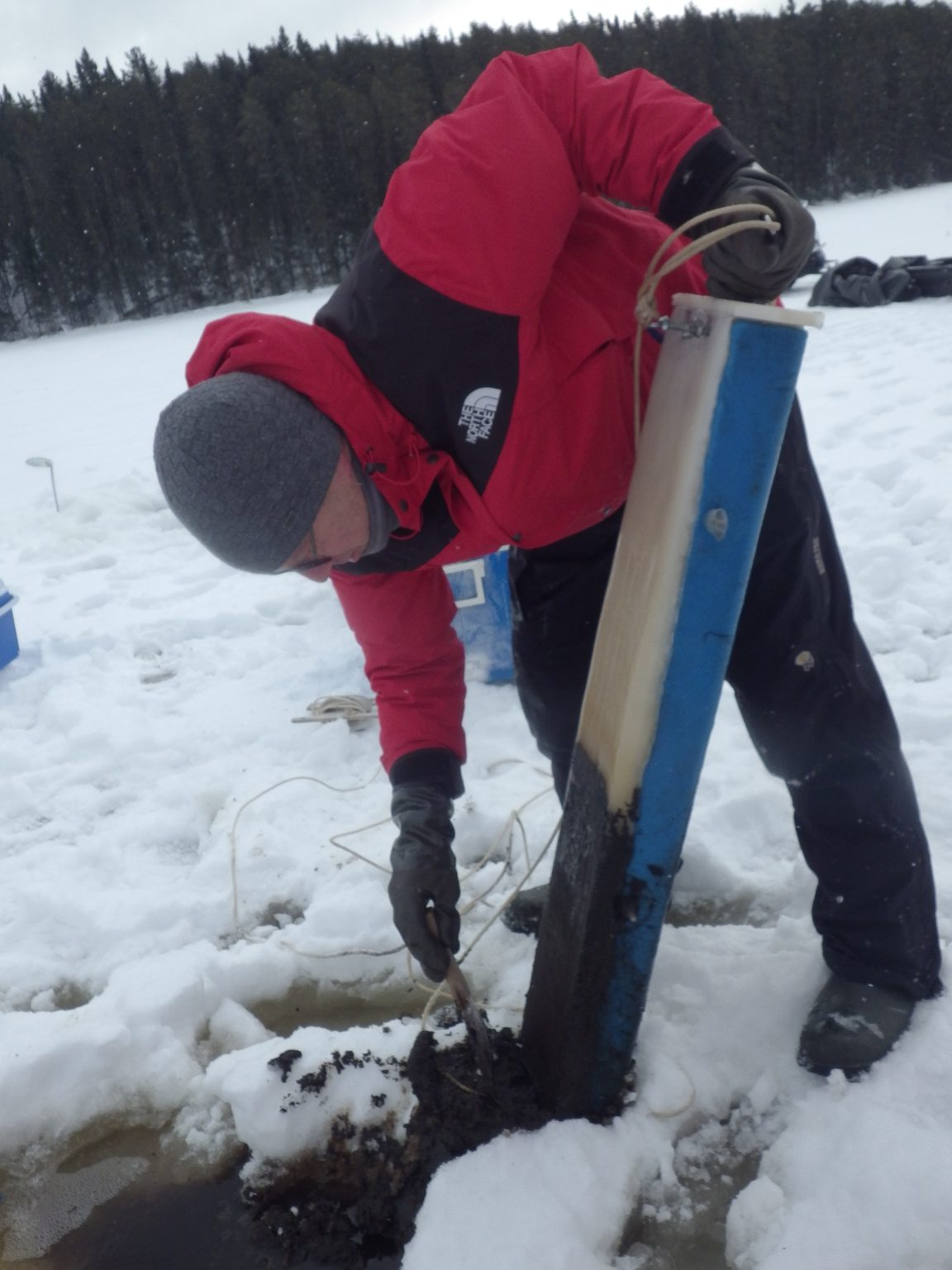
- A hammer and chisel are used to free the edges of the frozen sediment core from the freeze corer, and the core is carefully pried off. A saw is used to cut off excess ice above the area where the sediment and the water meet, and the bottom of the core. This work is very delicate, as the core is very fragile and can easily be broken or cracked.
Removing the core from the freeze corer.
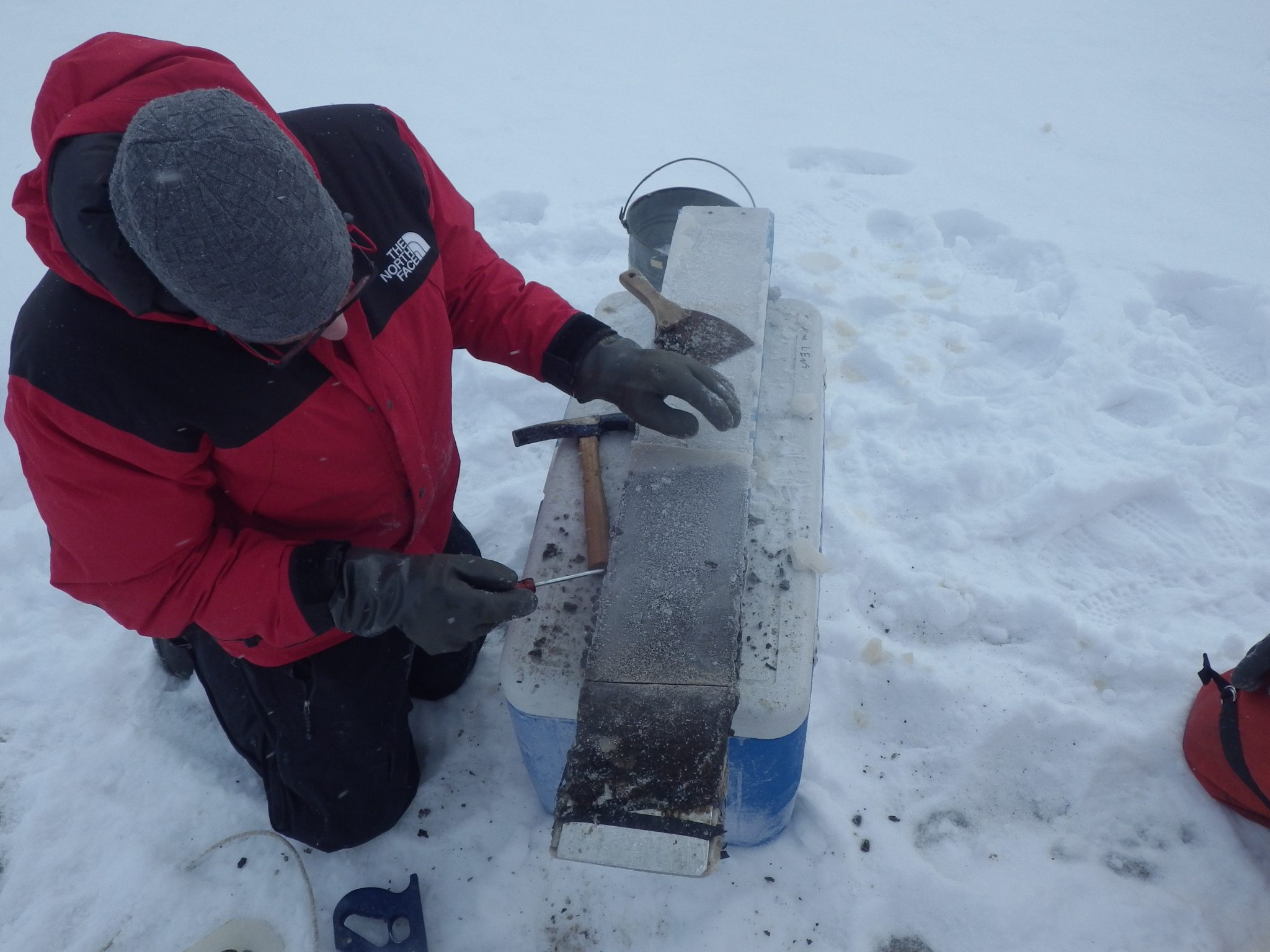
- The sediment core is laid on firm cardboard and wrapped tightly with plastic wrap for transport.
- Working outside or in a walk-in freezer, the core is sectioned into different depth intervals using a band saw. The core is now ready for analysis in the lab!
Sectioning the core with a band saw.
